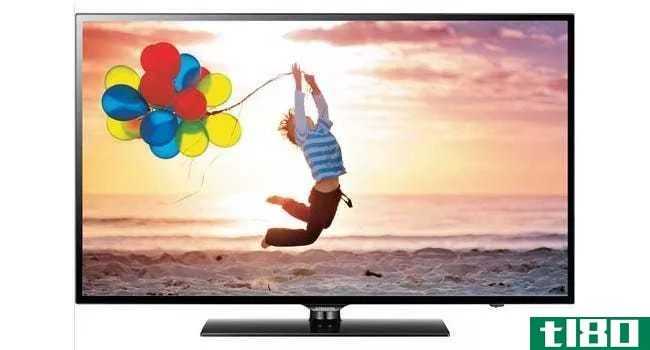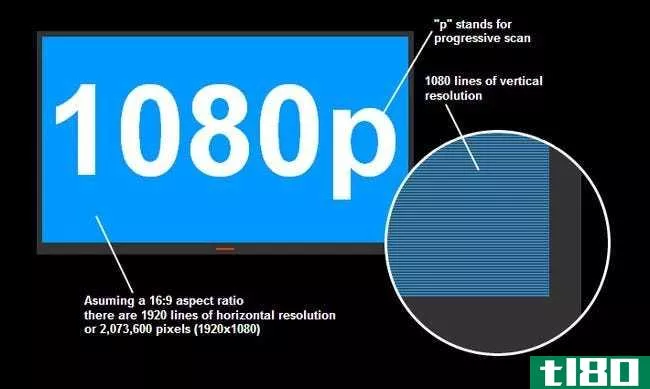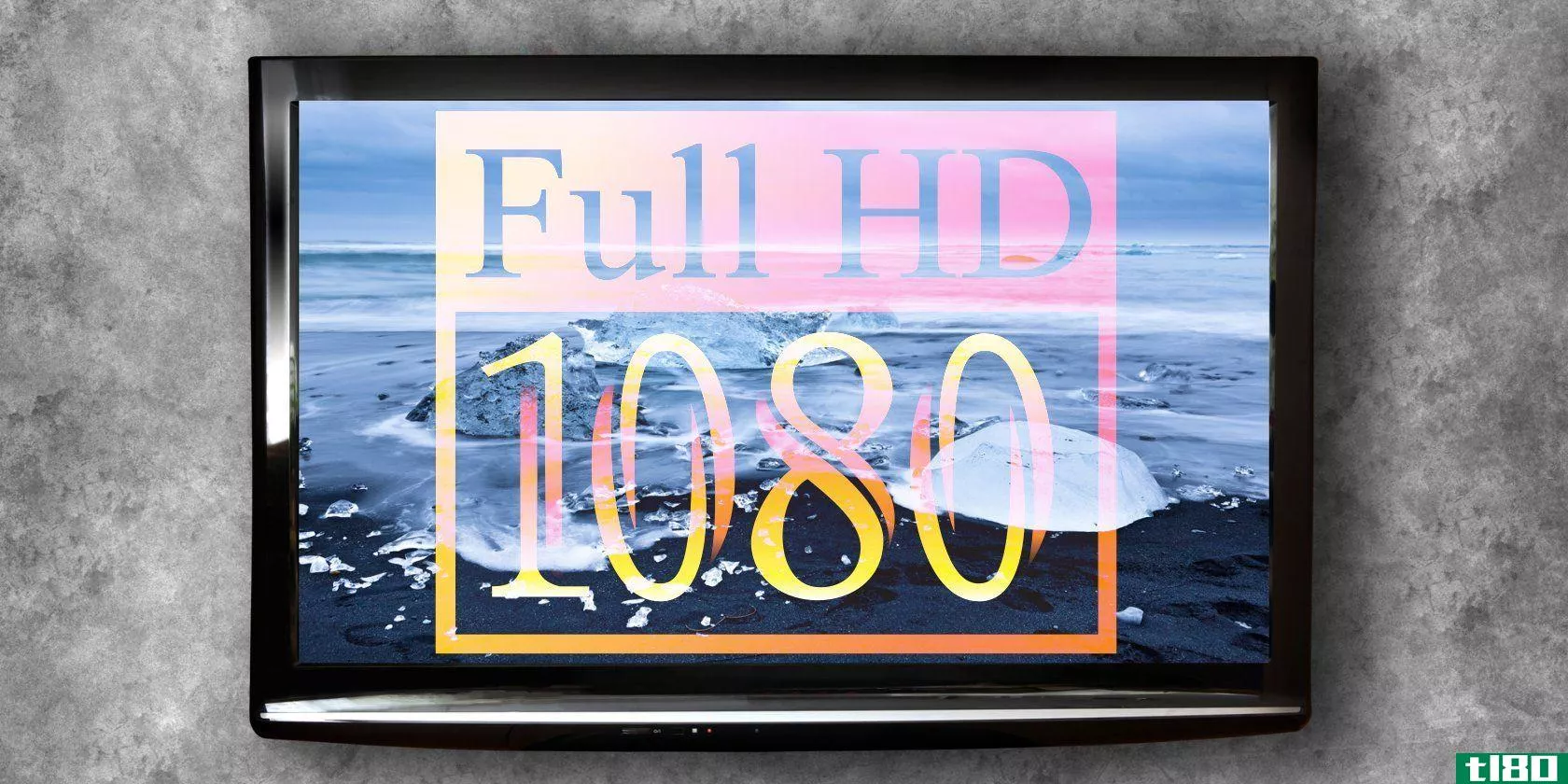1080p和1080i有什么区别?

高清电视显示器和高清媒体内容都标有1080p和1080i的名称,但这种名称到底意味着什么?它如何影响您的购买和观看决定?
今天的问答环节是由SuperUser提供的,SuperUser是Stack Exchange的一个分支,是一个由社区驱动的问答网站分组。
问题
超级用户读者Avirk对他在hdtv上看到的名称和内容以及它如何应用于电脑屏幕感到好奇。他写道:
I have seen many times resolution of 1080p and I know that mean 1080 pixels but sometime I also seen option on the HDTV is 1080i. So I want to know the exact difference between them and is 1080i video quality available for the laptop too?
I some Googled and got there are some time 1080P rather than 1080p is there any difference between them too or they represent the same?
让我们深入研究超级用户贡献者的答案,以弄清事情的真相。
答案是:

超级用户贡献者Rsp非常详细地解释了1080p和1080i之间的区别,以及它们之间的区别。他写道:
I see a range of problems in the answers and comments here (even in some highly-voted answers that provide otherwise very good information) that span from minor deficiencies that need explanation to some serious inaccuracies, so I think that some clarification is needed.
The question is specifically: What is the difference between 1080p and 1080i? so I will start by outlining the main similarities and differences, I’ll add some tips on how to choose the best format and then I will proceed to explain the problems that I found here.
Some of the information presented below is adapted from my answer to Interlacing on a computer monitor but is rewritten to strictly stick to the subject of the difference between 1080p and 1080i.
Resolution
Both 1080p and 1080i have 1080 horizontal lines of vertical resolution which with a widescreen aspect ratio of 16:9 results in a resolution of 1920 × 1080 pixels (2.1 megapixels). It is not true that 1080i has a lower vertical resolution than 1080p.
Frames vs. fields
1080p is a frame-based or progressive-scan video where you are dealing with frames. You have frame rate and it is expressed in frames per second.
1080i is a field-based or interlaced or interleaved video where you are dealing with fields. You havefield rate and it is expressed in fields per second.
A field contains half of the lines of the frame, either even lines or odd lines, and if one field is composed of even lines, then the next one will be composed of odd lines and so on.
Frequencies
1080p has a frame rate of 25 frames per second for TV in PAL countries, 30/1.001 frames per second for TV in NTSC countries and 24 frames per second for cinematography.
1080i has a field rate of 50 fields per second for TV in PAL countries and 60/1.001 fields per second in NTSC countries.
(Note that it is not 30 frames and 60 fields per second for NTSC but actually 30/1.001 and 60/1.001which is approximately 29.97 and 59.94 but the difference is important. Read about the NTSC color encoding on Wikipedia to see why.)
How to think about it
1080p at 25 frames per second: Imagine that you are shooting 25 pictures per second and storing them as bitmaps. Every frame is a full picture from the given instant. Every pixel in that frame was captured at the same time.
1080i at 50 fields per second: Imagine that you are shooting 50 pictures per second but storing onlyhalf of the bitmaps every time – sometimes you store the odd lines and sometimes the even lines. (Note that it is not the same as storing pictures with lower vertical resolution.) Every field is a half of a full picture from the given instant. Every pixel in that field was captured at the same time.
50 halves ≠ 25 full pictures
Contrary to some comments here, interlaced video at 50 Hz does not mean that 25 full pictures per second are shown. It means that 50 halves of pictures are shown but those are halves of 50 different pictures that were shot at 50 distinct moments of time in every second. You not only don’t have 50 full pictures per second – you don’t have any full pictures at all.
Problems with 1080i
Interlacing causes a lot of problems. For example you can’t easily:
- scale the video
- rotate the video
- make video slow motion
- make video fast motion
- pause the video
- grab a still picture frame
- play video in reverse
without doing some tricks and loosing quality. You don’t get any of those problems with progressive video. In addition the video encoding is harder because the codec never has a full frame to work with.
Problems with 1080p
The drawback is that 1080p as currently in use has a frame rate that is only half of the field rate of 1080i so the motion is noticeably less fluid – in fact it’s exactly twice less fluid which is a lot. You can see it on large flat TVs that often deinterlace the video to be able to display it on their LCD screens (that, unlike CRT displays, are progressive in nature) which is the cause that they display picture of very high resolution but with jerky motion and some deinterlacing artifacts.
Another problem is that usually 1080i is required for TV broadcasting which means that 1080p is simply out of the question for some applicati***.
Best of both worlds
Using progressive 1080p with 50 or 60/1.001 full frames per second in the future has a potential to eventually solve the above problems but it will require a whole new range of studio equipment including cameras, storage and editing systems so it probably won’t happen anytime soon. The widely used SDI standard for connecting HD video equipment doesn’t have enough bandwidth.
Currently the only way to have a fluid motion with progressive scanning is 720p that has a frame rate that is two times faster than 1080p but the resolution of only 1280 × 720 pixels (instead of 1920 × 1080 pixels) which may or may not be a problem for some applicati***. There is no 720i.
Conclusion
There is no one clear winner here.
Update: Here are some general guidelines to choose the right format:
- Is it for high-definition TV? Use 1080i or whatever is required.
- Is it for standard-definition TV? Use 720p and then convert to 576i or 480i.*
- Is it for Internet and resolution is more important than fluid motion? Use 1080p.
- Is it for Internet and fluid motion is more important than resolution? Use 720p.
(It all assumes that 1080p has a frame rate of 25 or 30/1.001 frames/s, 1080i has a field rate of 50 or 60/1.001 fields/s and 720p has a frame rate of 50 or 60/1.001 frames/s as is currently the case. Hopefully a high resolution progressive format like 1080p with a frame rate of 50 or 60/1.001 frames/s or maybe even higher will make this recommendation obsolete in the future.)
*) For number 2 make sure that your 720p has the frame rate of 50 fps if your target format is PAL or SECAM and 60/1.001 if your target format is NTSC (unfortunately it means that there is no format that can be converted to both PAL/SECAM and NTSC). The reason I recommend using 720p for recording is to greatly simplify the edition process when every frame is complete with no interlacing (throwing out every other line at the end is easier than creating the missing lines if you need them) and you have some extra resolution to work with so you can for example zoom the image slightly without making the result look blurry. (If anyone has any bad experience of using 720p to prepare material for SD PAL or NTSC TV broadcasting then please comment so I could update this recommendation.)
Explaining problems
These are the parts that I found in the answers and comments here that I think need some explanation:
Progressive Scanning is more desirable in almost every case.
I think that progressive scanning is indeed better in every respect, but if we are not talking theoretically about the idea of interlacing but specifically about 1080p and 1080i standards as used today, then one has to take into account the fact that 1080i is often required for TV broadcasting and converting 1080p to 1080i would result in jerky motion.
P is better than I in most cases i believe, which is the important bit.
Again, yes, progressive is better than interlaced all other things being equal, but progressive video with frame rate that is two times **aller than the field rate of interlaced video (which is the case with 1080p and 1080i) is something very different, especially if interlaced video with high field rate is required for TV broadcasting and the high field rate cannot be reproduced from progressively recorded material with lower frame rate.
[In 1080i] all the odd lines are displayed, followed by all the even lines. This means that only 1/2 the resolution (540 lines or pixel rows) is displayed on the screen at any give time – in other words, only 540 pixel rows are displayed at any given time.
No. For LCD all 1080 lines are always displayed, for CRT displays usually much less than half of of the lines are displayed at any given time which is equally true for both 1080i and 1080p.
The phrase “only 540 pixel rows are displayed at any given time” is extremely misleading. All 1080 rows-of-pixels usually are displayed at once (and even if they weren’t, they’d still appear to be to the human eye), but only half of them will be updated in any given frame. It’s effectively the refresh-rate, not the resolution, that’s cut in half.
While it is true that the phrase “only 540 pixel rows are displayed at any given time” is extremely misleading, it is not true that the refresh-rate is cut in half, because in 1080i the refresh rate is two times faster than with 1080p so it is actually the other way around.
1080i60 means that you’re getting 60 half frames (alternating lines) per second, so only 30 complete frames per second.
With 1080i60 you actually get less than 60 fields (or “half frames”) per second, but it doesn’t mean that you get 30 (or almost 30) complete frames per second. In fact you don’t get even a single complete frame per second.
More resources
This is what I c***ider the best resource on the subject of field-based (aka interlaced or interleaved) and frame-based (aka progressive-scan) video:
- All About Video Fields by Chris Pirazzi
- Programmer’s Guide to Video Systems by Chris Pirazzi
See also the following articles on Wikipedia:
- 1080p
- 1080i
- Frame (video)
- Field (video)
- Progressive scan
- Interlaced video
- Deinterlacing
I hope it somewhat clarifies the subject.
有什么要补充的解释吗?在评论中发出声音。想从其他精通技术的Stack Exchange用户那里了解更多答案吗?在这里查看完整的讨论主题。
- 发表于 2021-04-12 02:55
- 阅读 ( 256 )
- 分类:互联网
你可能感兴趣的文章
高清和全高清有什么区别?
... 等等,HD准备在上面干什么?根据你住的地方,HD Ready的定义略有不同。具体来说,美国和欧洲对它的定义不同。 ...
- 发布于 2021-03-12 20:44
- 阅读 ( 369 )
1080p和1080i有什么区别?
...体内容都标有1080p和1080i的名称,但这种名称到底意味着什么?它如何影响您的购买和观看决定? 今天的问答环节是由SuperUser提供的,SuperUser是Stack Exchange的一个分支,是一个由社区驱动的问答网站分组。 问题 超级用户读者Avirk...
- 发布于 2021-04-12 02:55
- 阅读 ( 256 )
4千(4k)和1080便士(1080p)的区别
...两个。4K表示超高清,1080p表示高清。 覆盖的关键领域 1.什么是4K–功能、用法2.什么是1080p–功能、用法3.4K和1080p之间的差异–关键差异比较 关键词:4K,1080p,分辨率 什么是4千(4k)? 像素是数字图像或数字显示设备上可见的...
- 发布于 2021-06-30 15:35
- 阅读 ( 401 )
1080i型(1080i)和720便士(720p)的区别
...i。 解释差异的视频 下面是一段视频,解释了1080i和720p的区别。 参考文献 维基百科:720p
- 发布于 2021-07-04 02:30
- 阅读 ( 170 )
1080便士(1080p)和720便士(720p)的区别
...的影响,包括电视机有多大,离电视机有多近,使用的是什么DVD播放器,电视机的刷新率或纵横比是多少,甚至视频或游戏内容的帧速率是多少。下面的视频总结了1080p和720p在图像质量方面的差异。 内容可用性和创建 FCC将高...
- 发布于 2021-07-06 09:39
- 阅读 ( 457 )
带路(led)和液晶高清电视(lcd hdtv)的区别
...别,首先要看清楚LED和LCD的区别。此外,人们还应该知道什么是高清电视放在首位。 HDTV只不过是支持高清的电视。高清代表高清晰度。HDTV可以以各种格式传输,例如1080p(1920×1080p:2073600像素)、1080i(1920×1080i:1036800像素)或(...
- 发布于 2021-07-12 11:18
- 阅读 ( 179 )
高清(hd)和全高清(full hd)的区别
...高清视频。然而,许多人并没有意识到高清实际上意味着什么。 HD基本上需要比标准更高的分辨率。最初,高清指的是水平线超过480行或570行的视频;北美480条水平线,欧洲570条。数字对应于水平显示的像素行。虽然超过480条水...
- 发布于 2021-07-13 08:07
- 阅读 ( 458 )
高清(hd)和高清就绪(hd ready)的区别
...高清视频。然而,许多人并没有意识到高清实际上意味着什么。 HD基本上需要比标准更高的分辨率。最初,高清指的是水平线超过480行或570行的视频;北美480条水平线,欧洲570条。数字对应于水平显示的像素行。虽然超过480条水...
- 发布于 2021-07-13 08:08
- 阅读 ( 156 )
高清(hd)和三维(3d)的区别
...3D的。然而,许多人并没有意识到高清或3D实际上意味着什么。 HD基本上需要比标准更高的分辨率。最初,高清指的是水平线超过480行或570行的视频;北美480条水平线,欧洲570条。数字对应于水平显示的像素行。虽然超过480条水...
- 发布于 2021-07-13 08:08
- 阅读 ( 173 )
高清(hd)和hdx公司(hdx)的区别
关键区别:Vudu是一家内容交付和媒体技术公司。该网站允许用户通过互联网购买、租赁或观看高清电影和电视节目。在Vudu,用户可以观看三种格式之一的电影和电视节目:SD、HD和HDX。HD需要比标准更高的分辨率。HDX是Vudu发布...
- 发布于 2021-07-13 08:09
- 阅读 ( 120 )














